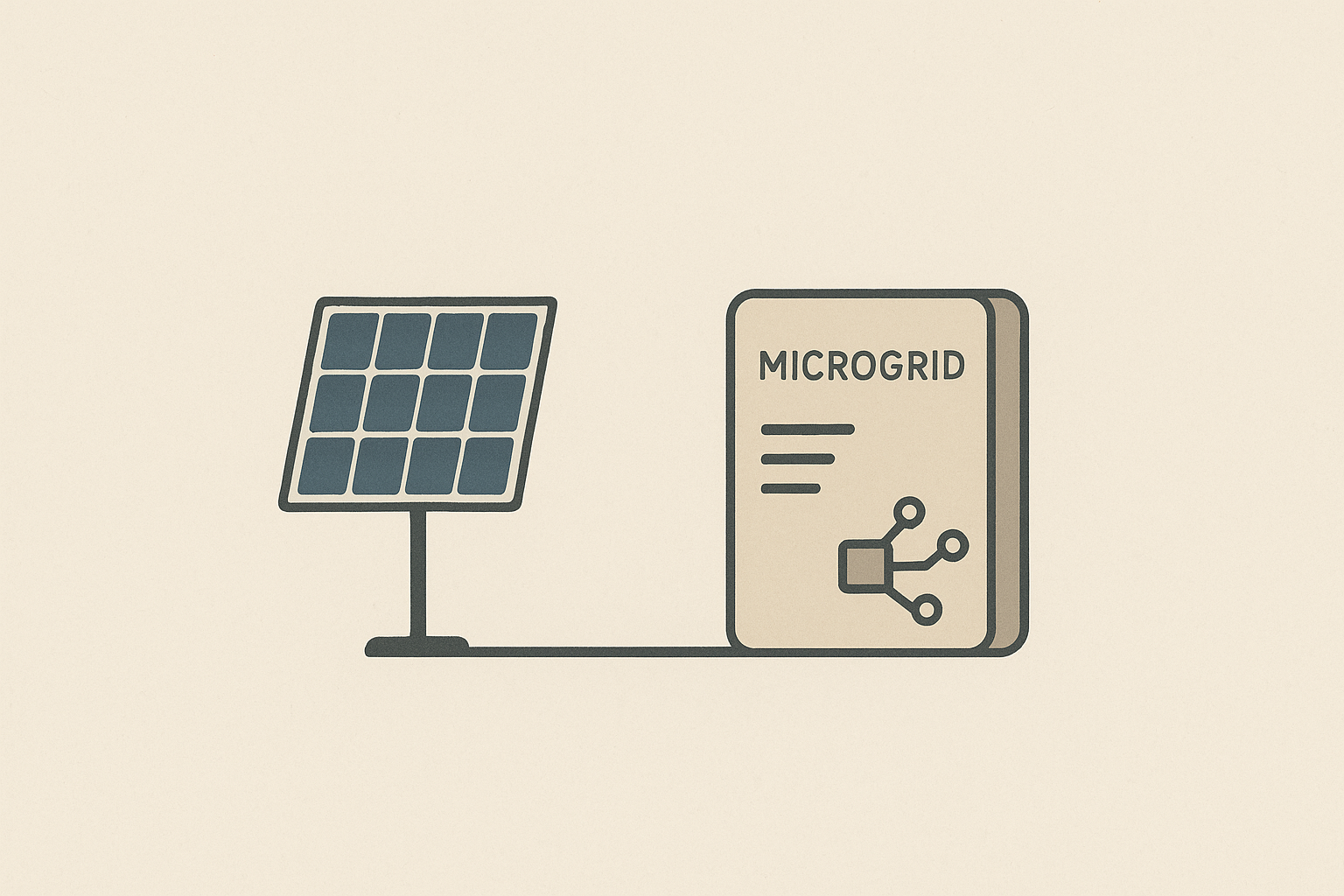Operational Carbon Accounting for Cloud-Native Systems: Practical Frameworks, Tooling and Business Models
Measure, manage and monetise the operational carbon of cloud-native systems with pragmatic frameworks and tooling.

The Evergreen Challenge: Operational Carbon Accounting for Cloud-Native Systems
Cloud-native systems are now the backbone of modern products and services. They are elastic, distributed and highly dynamic, which is a technical advantage and an accounting challenge. Teams that want to reduce emissions need a practical way to measure and manage the carbon footprint of their compute, networking and storage across changing workloads and provider regions.
This problem is evergreen. Organisations will continue to run software at scale, hardware will continue to consume power, and regulators, customers and investors will continue to expect credible, auditable operational carbon accounting. The engineering challenge is to create measurement frameworks and operational practices that are robust to infrastructure changes, provider heterogeneity and shifting business models.
Did You Know?
One persistent source of under-counted emissions is the operational cost of idle resources and inefficient resource placement; small inefficiencies at scale create sustained, measurable carbon liabilities.
Why this matters, long-term
- Carbon accounting improves product design choices, not just green credentials; it drives latency, cost and availability trade-offs.
- Accurate operational metrics create leverage for optimisation and for credible reporting to stakeholders.
- Integration into engineering workflows produces lasting behaviour change; measurement without operational impact is temporary.
For policy context, the UK has committed to long-term decarbonisation through official strategy and targets; teams should design accounting frameworks that support those commitments and external reporting requirements (see UK net zero strategy).
Two evergreen solution families
We present two complementary, future-proof approaches you can adopt. Each is implementable incrementally, and both together form a durable, engineering-led carbon management capability.
Solution A: Runtime Carbon-Aware Platform (technical, developer-forward)
Summary. Treat carbon as an operational signal, similar to latency or error rate. Capture energy proxies from the host and orchestrator, attribute energy to services and requests, and feed that signal into schedulers, autoscalers and deployment policies.
Why this works
- Operational behaviour is controlled by runtime systems; integrating carbon into runtime decisions makes reductions automatic and persistent.
- It fits into continuous delivery: the same telemetry that powers performance optimisation powers carbon optimisation.
Step-by-step implementation (technical)
- Establish energy proxies, not perfect measurements. Use CPU utilisation, CPU frequency, GPU utilisation, network bytes, and platform-reported power metrics where available. Combine hardware counters with platform telemetry to produce an energy estimate per host.
- Expose a per-host energy-exporter. This should run as a lightweight daemonset or system agent that exports power estimates to your telemetry system, for example Prometheus. Where possible use platform power APIs, or RAPL on Intel and equivalent on other vendors; fall back to calibrated models based on CPU util, base power and PUE factors.
- Attribute host energy to containers and services. Use per-process CPU accounting, cgroup metrics, or container runtime metrics to split host energy across workloads proportionally.
- Aggregate to per-request or per-job metrics. For synchronous services, capture request-level CPU time and translate via the energy per CPU-second factor. For asynchronous batch jobs, apply job-level energy directly.
- Feed the metric into operational systems: dashboards, alerts, autoscalers, and a carbon-aware scheduler or placement controller.
- Automate policy: e.g. prefer low-carbon regions during batch windows, throttle non-critical background work when grid intensity spikes, or schedule compute to run in off-peak hours where renewable share is higher.
Concrete tooling example: Prometheus exporter and per-request accounting
Below is a pragmatic Python exporter that uses procfs and a simple power model to estimate host energy, then a Node.js request middleware to attribute energy to requests. This is an enduring pattern: a small agent, a per-request attribution layer, and standard monitoring plumbing.
<!-- exporter.py (run on each host) -->
from prometheus_client import start_http_server, Gauge
import time
import psutil
# Simple power model parameters (calibrate per instance type)
BASE_WATTS = 20.0 # idle platform baseline
MAX_CPU_WATTS = 100.0 # additional watts at 100% CPU
energy_gauge = Gauge('host_power_watts', 'Estimated host power in watts')
cpu_gauge = Gauge('host_cpu_percent', 'Host CPU percent')
def estimate_power():
cpu = psutil.cpu_percent(interval=1)
power = BASE_WATTS + (cpu / 100.0) * MAX_CPU_WATTS
return cpu, power
if __name__ == '__main__':
start_http_server(9100)
while True:
cpu, power = estimate_power()
cpu_gauge.set(cpu)
energy_gauge.set(power)
time.sleep(5)
<!-- node_middleware.js (express middleware for per-request energy attribution) -->
const axios = require('axios');
const os = require('os');
// Query the local exporter to get watts; in production cache for short period
async function getHostWatts() {
const res = await axios.get('http://localhost:9100/metrics');
// Very small parser for the demo; use client libraries in production
const match = res.data.match(/host_power_watts (\d+\.?\d*)/);
return match ? parseFloat(match[1]) : null;
}
function energyMiddleware() {
let cachedWatts = null;
let lastFetch = 0;
const TTL = 5000;
return async function (req, res, next) {
const start = process.hrtime();
res.on('finish', async () => {
const diff = process.hrtime(start);
const sec = diff[0] + diff[1] / 1e9;
const now = Date.now();
if (!cachedWatts || now - lastFetch > TTL) {
try {
cachedWatts = await getHostWatts();
lastFetch = now;
} catch (e) {
cachedWatts = null;
}
}
// Assume single-threaded work proportional to request duration; refine with CPU time
if (cachedWatts) {
const energyJ = cachedWatts * sec; // watts * seconds = joules
// Store to your metrics backend; example: console log or push gateway
console.log(`req=${req.path} duration_s=${sec.toFixed(3)} energy_j=${energyJ.toFixed(2)}`);
}
});
next();
};
}
module.exports = energyMiddleware;
Notes on productionising the example
- Replace crude power models with vendor-reported metrics where available; calibrate BASE_WATTS and MAX_CPU_WATTS per instance family.
- Use per-thread or per-cgroup CPU time for better attribution; cpuacct.usage in cgroups v1 or cgroupv2 counters are more precise than wall-clock duration.
- Expose per-container energy metrics to the central telemetry system; treat energy alongside latency and errors in SLOs.
Operational policies you can implement quickly
- Low-carbon scheduling window: schedule non-urgent batch jobs to run in regions or time windows with lower grid intensity.
- Dynamic throttling: reduce background processing throughput during high-carbon periods or when energy per request rises.
- Right-sizing enforcement: alert when energy-per-request increases due to oversized or underutilised hosts.
Pro Tip: Start with coarse proxies and a single policy (for example, schedule all nightly batch jobs to the region with lowest estimated carbon intensity). Iterate incrementally; precise metering can follow once policies are effective.
Solution B: Carbon Budgeting, Financial Models and Product Integration (business + process)
Summary. Treat carbon as a finite, budgetable resource inside product planning, SRE and finance processes. Link engineering changes to carbon budgets, internal pricing, and product metrics to ensure long-term incentives align with reductions.
Why this works
- Operational change requires business signals. A carbon budget and internal pricing translate environmental goals into product trade-offs and KPIs.
- Embedding carbon in product economics sustains activity beyond one-off optimisation sprints.
Step-by-step implementation (organisational, monetisation and financial modelling)
- Create a baseline. Use the runtime metrics from Solution A to compute a rolling 12-month operational carbon baseline per product, feature or tenant.
- Define a carbon budget. Translate corporate net-zero targets into product-level budgets. For example, allocate a 20% reduction target year-on-year to specific product areas.
- Internal carbon pricing. Introduce an internal carbon price per tonne CO2e; charge product teams a ledger cost when their services exceed allocated budgets. The price should be meaningful but not punitive; it is a tool to shape decisions.
- Integrate into planning and CI/CD. Require a carbon impact assessment for significant changes, similar to cost or security reviews. Gate production deployments that materially increase projected emissions above thresholds.
- Monetisation and customer-facing models. Offer low-carbon tiers (e.g. compute scheduled in low-carbon windows) as a paid feature or discount customers when they select low-carbon options that improve resource efficiency.
- Financial analysis. Use a simple ROI model to evaluate optimisation efforts: compare engineering time versus avoided internal carbon charges and potential revenue from low-carbon products.
Example financial model
Simple ROI spreadsheet logic, adaptable to your metrics:
Inputs:
- Baseline annual emissions for product X: 500 tCO2e
- Internal carbon price: £50 per tCO2e
- Annual internal charge today: 500 * £50 = £25,000
- Planned optimisation cost: 3 engineer-months = £30,000
- Expected reduction: 30% = 150 tCO2e
- Annual saving via reduced internal charge: 150 * £50 = £7,500
- Time to payback: 30,000 / 7,500 = 4 years
Decision levers:
- Increase internal carbon price to accelerate payback
- Capture customer revenue for low-carbon features to shorten payback
- Combine engineering savings with infrastructure cost savings to improve economics
This shows the importance of internal price setting and product-led monetisation to make engineering investment rational.
Q&A: How do I choose an internal carbon price? Start with a price that influences decisions; many organisations select a value between £20 and £100 per tCO2e as a practical starting point, then adjust based on observed behaviour and budget constraints.
Combining both solutions for persistent impact
Technical measurement enables accurate budgets; budgets create the incentive loop that sustains technical work. Together they form a long-lived capability: continuous measurement, policy automation and economic steering.
Implementation checklist and workflows
- Telemetry and baseline: deploy a host exporter, collect container-level CPU accounting, and compute per-service energy metrics.
- Attribution: ensure request-level or job-level attribution is in place for product-level metrics.
- Policy automation: add carbon-aware autoscaling and scheduled placement policies, starting with non-invasive batch workloads.
- Governance: set product carbon budgets, add carbon impact to deployment checks, and create internal pricing.
- Reporting and audit: maintain historical records to support reporting and audit. Export monthly reports for finance and sustainability teams.
Case study patterns (abstracted and repeatable)
Pattern 1: Batch migration. An adtech platform moves nightly model training from Region A with high grid intensity to Region B during windows with higher renewable share. Result: 40% reduction in batch window emissions with minimal cost impact.
Pattern 2: Runtime throttling for non-critical paths. A SaaS product throttles analytics ingestion during high-carbon events and replays later. Result: Persistent 12% reduction in operational emissions and lower peak costs.
Pattern 3: Product differentiation. A B2B provider offers a "low-carbon compute" option, running customer workloads in low-carbon regions and scheduling non-urgent tasks for low-carbon windows. This becomes a paid tier valued by sustainability-conscious customers.
Instrumentation and auditability
For stakeholder trust, audits must be possible. Keep raw telemetry, calibration parameters and attribution rules in version control and retain historical models. Document assumptions such as PUE, grid-carbon intensity source, and hardware calibration. A consistent, auditable pipeline is more valuable than a single high-precision measurement.
For grid intensity and region-level data, use reputable public sources or vendor disclosures and record the source with rel="nofollow" links in your reports when required. Example external context is the UK net zero strategy and related public data on energy system decarbonisation (official UK net zero strategy).
Integration with storage and data lifecycle choices
Compute and storage are linked; shorter retention, deduplication and efficient data encodings reduce both storage footprint and the compute required for handling that data. For teams that already run storage optimisation programmes, integrate storage savings into the carbon and financial model. See the related practical frameworks in Sustainable Data Lifecycle Management: Practical Frameworks to Shrink Storage Footprint and Cost Sustainable Data Lifecycle Management: Practical Frameworks to Shrink Storage Footprint and Cost.
Warning: Avoid double-counting. If you account for an energy-saving measure both in storage and compute metrics separately, ensure the final reports reconcile overlapping savings.
Long-term governance and cultural change
Technical systems and budgets are necessary but not sufficient. Long-term impact requires embedding carbon considerations into engineering culture:
- Include carbon estimates in design docs for major features.
- Set team-level carbon KPIs, linked to performance reviews or team budgets where appropriate.
- Run regular "carbon game days" and optimisation sprints, focusing on measurable outcomes.
Measuring success: KPIs that last
- Energy per request or per transaction, normalised to unit of business value.
- tCO2e per monthly active user or per revenue unit, to align with commercial metrics.
- Cost savings from energy reductions and internal carbon charges avoided.
Technical extensions and emergent opportunities
As measurement matures, more advanced controls are possible, such as predictive scheduling (using weather and grid forecasts), multi-cloud carbon-aware placement and contractual SLAs for low-carbon delivery. These are natural, long-term extensions that leverage the base telemetry and governance framework.
Evening Actionables
- Run a one-week pilot: deploy a lightweight host exporter and a per-request attribution middleware on a non-critical service; collect metrics for seven days and compute a baseline.
- Define a carbon budget for one product area and set an internal carbon price; track the first monthly internal charge to create a behavioural signal.
- Implement one automated policy, for example schedule nightly batch jobs to lower-carbon regions, and measure the delta.
- Checklist for audit readiness: store raw telemetry, configuration, and calibration parameters in version control; document PUE and grid intensity sources.
Delivering credible operational carbon accounting requires engineering craft, pragmatic modelling and aligned economic incentives. The frameworks above are not one-off exercises; they are repeatable practices that become more effective with time, and they remain valuable irrespective of specific cloud providers or short-term market changes.





Comments ()